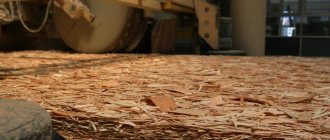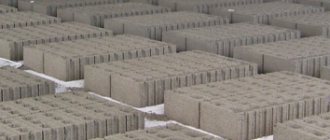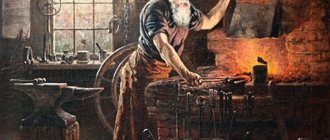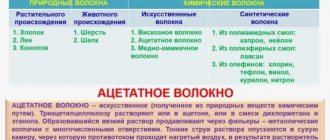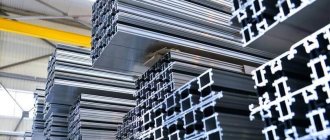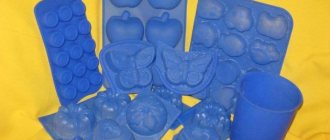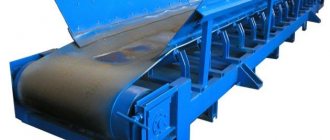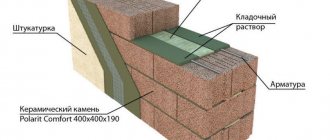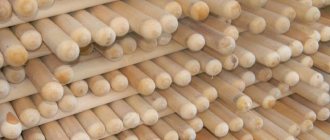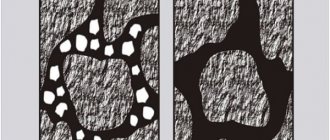Relevance of this business
Nowadays, this project is in great demand. Beginning entrepreneurs are interested in how to launch this project to create high-quality material. It is attractive because the payback period is short, because many people use this type of stone in construction. Aerated concrete parameters: 10*30*60 cm and 20*30*60 cm. It has a large number of positive qualities:
- unpretentiousness to the foundation of the house, high strength, low weight;
- retains heat well, does not allow cold to pass through, and protects from external noise;
- easy to install, allows you to quickly erect a structure;
- easy to process, achieve the desired shape of the material;
- environmentally friendly material;
- earthquake-resistant;
- fire-resistant stone, with high fire safety.
Therefore, consumers choose this product. The product contains the following components:
- cement;
- sand (quartz is perfect);
- gas generator (this can be: aluminum powder, paste, lime, ash, gypsum).
Recipe and material characteristics
Aerated concrete refers to cellular concrete mixtures, that is, lightweight porous building materials. The main feature is its relatively low weight and low density (from 500 kg per m3). The pores of the material are filled with air, which gives aerated concrete a high ability to accumulate heat. Due to its good vapor permeability, the material is also called “breathable,” which creates a comfortable microclimate in the room. It is considered environmentally friendly because it does not emit toxic substances when heated. It is fireproof because it does not heat up and burn well. To make aerated concrete blocks, the following components are required:
The production of aerated concrete products involves the use of various components, such as cement powder and gypsum.
- aluminum powder;
- water;
- crushed quartz sand;
- gypsum;
- lime;
- concrete hardening accelerator solution;
- surfactant additive plasticizer;
- cement powder.
Stages of organization
Determine how large your enterprise will be and what type of products you will produce. There are two types of material production:
- autoclave;
- non-autoclave.
In order to produce aerated concrete using method 1, you need to harden it in an autoclave with steam. To make the material using method 2, it is necessary to dry the aerated concrete using heating.
What you will need:
- rented or personal premises;
- line for the production of aerated blocks from scratch;
- workers.
From the data on what volume of production will be and what type of material is suitable, you can determine the area of the premises, the amount of equipment and the number of employees.
If you plan to produce up to 30 meters of cubic blocks per day, working an 8-hour shift, a room of 70 square meters will be enough for you. When producing 100 - 150 cubic meters, working around the clock, an area of about 600 square meters will be required. It is necessary to have warehouses for storing products, although it is possible to leave blocks in the open air.
To produce 1 cubic meter of blocks you need:
| 250 kg cement | 1,000 rudders |
| Fillers | 180 rubles |
| Aluminum powder, other additions | 150 rubles |
With such data, it turns out that the cost is 1,500 thousand. It turns out that the minimum price for 1 cubic meter is 2,500 thousand.
Business plan for the production of aerated concrete blocks:
- registration of an organization – from 7 to 10 days;
- finding rental premises – a month before the start of the enterprise’s activities;
- purchase of equipment - two weeks before the opening;
- installation of equipment and connection - before the start of activity;
- purchase of necessary raw materials - a week before the start;
- recruitment of employees - before the start;
- start of the production process - after registration papers are completed;
- finding buyers, establishing sales - from the moment work on the project begins;
- material sales;
- creation of reserves.
Manufacturing technology
Technology of aerated concrete production.
When making aerated blocks, specialists use the following ingredients:
- water;
- aluminum powder;
- gypsum additive;
- lime;
- construction sand;
- cement.
The entire product manufacturing plan consists of several stages. First of all, the raw materials must be thoroughly sifted in order to clean the materials from impurities. After this, sand and water should be mixed. Then the required amount of components is loaded into the equipment, due to the use of which the necessary reactions occur when mixed: a solution with a cellular structure is obtained. The finished mixture is formed according to plan.
In order for the material to acquire the required height and shape, it is placed in molding equipment. The final stage of formation occurs when the composition reaches the required height. In this case, a minimum amount of gases should be released. After the gas blocks have hardened, they can be removed from the molds and then cut according to the parameters specified in the plan. Residues are used in the production of new products. The next stage involves processing with liquid and heat. The aerated blocks can then be packaged and sent to the warehouse.
Return to contents
Search for clients
Manufacturers and buyers are pleased with the fact that the building material is suitable for any climate zone. It is usually used when constructing buildings:
- low-rise residential premises;
- industrial;
- agrarian;
- administrative;
- social.
The product is in demand both among large construction organizations and individuals with development rights.
You can sell goods to construction trade warehouses and markets. Distribute price catalogs to stores. Send business proposals to development companies. Publish advertisements for private clients.
Please note that the demand for this category of product is seasonal; advertising must be organized before the start of activity. Consider the efficiency of the equipment in use and the method of creating aerated concrete - it can be put on sale a month from the date of production.
Comparative analysis of autoclave and non-autoclave production
If we compare the two types of material, the autoclave wins in many respects. But there are cases when certain properties are not so important for a building material, so it is worth studying the features of both technologies and determining the need for an autoclave and its costs.
What is the difference between autoclaved and non-autoclaved aerated concrete:
- Strength and thermal conductivity - due to the action of steam under pressure and at high temperatures, products become more durable and less thermally conductive. Aerated concrete is baked, as it were, without having time to collapse or experience stress, which eliminates shrinkage in the future.
- Frost resistance - non-autoclaved blocks tolerate the freezing/thawing process worse (they survive fewer cycles without destruction or deformation).
- Geometry and appearance - autoclaved aerated concrete is more ideal in size and demonstrates maximum dimensional accuracy.
- The complexity of the production process - an autoclave is expensive, but its use does not affect the block production process itself.
- Fragility - non-autoclaved aerated concrete is more vulnerable to impacts and mechanical influences.
- Price – an autoclave unit costs on average 10% more than what was produced without treatment.
- Shrinkage – autoclaved aerated concrete practically does not shrink; non-autoclaved aerated concrete may require small values.
Necessary equipment
If you have a small organization with a small capital investment, use equipment for the production of aerated concrete using a non-autoclave method (drying of the manufactured blocks is carried out naturally). In this case, you will need pouring molds and a professional mixer.
If a discovery occurs that involves an autoclave method of creation with a more powerful production line, you will need, in addition to the usual devices, an autoclave (for the purpose of increased temperature treatment). Also required:
- vibrating sieve;
- compressor;
- dispenser;
- cutting devices;
- conveyor line.
- steam generator;
A vibrating sieve is needed to sift sand. The dispenser accurately determines the amount of required components. The steam generator provides steam for processing aerated concrete blocks.
With this set, the production speed will increase, but opening will require a larger sum of money.
Based on a productivity of 60 cubic meters daily, the cost of the minimum set is 790,000 rubles. The cost of delivery, VAT of installation, setup and connection of equipment to utilities is not taken into account.
Features of aerated concrete production
To obtain a batch of aerated concrete blocks, sand is first crushed in a drum-ball mill, then the necessary ingredients are mixed. After this, water and aluminum powder are added to the dry mixture. The mixture is placed in a tank where a chemical reaction occurs, resulting in the formation of hydrogen. Thanks to this gas, pores form in the solution. The raw material hardens a little, then is cut into blocks and polished. After this, the blocks are placed in an autoclave, where they remain for 12 hours and are treated with steam at a temperature of 190 degrees. After the finished aerated concrete has cooled, it is packaged and delivered to customers.
Costs and profits
You will spend three months launching the business; you should start thinking about opening it in early spring. The size of your investment during this period will be equal to 4,378,000 rubles.
Costs in rubles:
| Enterprise registration | 10,000 rubles |
| Rent for 3 months | 240,000 rubles |
| Equipment | 909,000 rubles |
| Assembly and delivery of equipment | 150,000 rubles |
| Development of reserves of raw materials for the creation of aerated concrete | 800,000 rubles |
| Employees' salaries | 117,000 rubles |
| Processes of organizing and selling goods (for 3 months) | 95,000 rubles (285,000 rubles) |
All this is required to open a business. Every month you will spend certain amounts in rubles:
| Rent of space for warehouse and production processes | 80,000 rubles |
| Salary and contributions to the tax service for 2-3 employees | 117,000 rubles |
| Raw materials for the formation of starting material | 800,000 rubles |
| Various expenses of the organization | 95,000 rubles |
| Expenses (transport, storage) | 45,000 rubles |
| Bank commissions and maintenance of the created account | 2,500 rubles |
| Electric Energy | 9,200 rubles |
| Means of communication | 3,000 rubles |
| 5,000 rubles | |
| Consumables | 20,000 rubles |
| Payments | 10,000 rubles |
It turns out about 1,100,000 rubles every month.
Profitability at a high level. Payback period from 4 months to a year.
Possible income level
Income depends on productivity. You may have 3 predicted development options: pessimistic, realistic, optimistic.
With option 1 (loading power - 30%), your earnings are 331,200 rubles per month:
| 18 m cubic | aerated concrete daily |
| 23 | shifts per month |
| 1 242 000 | net income |
| 414 m cubic | produced monthly |
| 3,000 rubles | unit price |
| 1 year | project payback period |
Option 2 (loading power - 60%) assumes an income of 662,400 rubles per month:
| 36 m cubic | aerated concrete daily |
| 23 | shifts per month |
| 2 484 000 | net income |
| 828 m cubic | produced monthly |
| 3,000 rubles | unit price |
| Six months | project payback period |
Option 3 (load capacity – 90%) gives a profit of 993,000 rubles per month:
| 54 m cubic | aerated concrete daily |
| 23 | shifts per month |
| 3 726 000 | net income |
| 1,242 cubic meters | produced monthly |
| 3,000 rubles | unit price |
| 4 months | project payback period |
Productivity depends on you. Also influenced by the fact that the demand for this product is seasonal. It is advisable to launch production during this period and have time to sell all the goods.
Financial calculations
Experts believe that the production of building materials, products and structures is a highly profitable business.
The cost of 1 cubic meter of material is 1.8 thousand rubles. It retails for 2.5 thousand rubles. If your enterprise produces 250 cubic meters per month. meters of blocks, the net profit will be 175 thousand rubles. Capital investments pay off in 1–2 years. The greatest demand for aerated concrete blocks is observed from spring to autumn. Therefore, it is best to prepare the enterprise for launch in the off-season, in order to complete all preparatory work before spring. In order to have a stock of finished products in stock, you can start working in March. If you adhere to these recommendations, the payback period will be significantly reduced and the company will quickly reach a net profit.
In order to reduce the payback period of the enterprise, you can organize the production of garden figurines for your dacha using your own hands from production waste and defective products. These products are widely used in landscape design and for decorating personal plots. Many successful entrepreneurs have built their business on the production of such products.
Registration and registration of business
You need to register your organization in the form of “IP” or “LLC”. It is necessary to draw up a business plan for production, analyze the market situation, and identify competitors. Here are the step-by-step instructions:
- Summary of the enterprise;
- Marketing project;
- Organizational plan;
- Financial plan;
- Risk analysis.
If you understand that you cannot understand all the intricacies of the registration process, we advise you to contact specialists.
Disadvantages and advantages of this business.
The positive aspects are:
- a sought-after product, the demand for which is constantly growing;
- low production costs;
- high profitability, short payback period;
- not a very large amount of initial capital is required;
The shortcomings are noted as follows:
- increasing and serious competition in this market;
- demand for goods is seasonal;
- the need for storage facilities;
- you need to constantly attract new customers.
Each region has its own specific case. When opening production, rely on data from your region.
Useful tips and tricks
First, get to know your market. It is advisable to find buyers in advance; this will prevent the finished product from sitting idle.
Organize your enterprise in the spring, so that by the time construction work usually begins, the vases will have a supply of the finished product.
If you are going to produce non-autoclaved concrete up to 10 cubic meters of material daily, then you will spend about 200,000 thousand on equipment, if from 25 - 30 cubic meters, then about 450,000 thousand, if 75 - 150 cubic meters, then from 2,000,000 thousand . Decide how much product you can sell in your region. From this data, decide how much to produce.
It is profitable to create an organization for the production of aerated concrete. An aspiring entrepreneur needs to expand his knowledge in this area. Follow all instructions in your business plan before opening your business. If you organize your project correctly, success awaits you!
Physical and mechanical properties of aerated concrete products
One of these popular building wall materials is aerated concrete, used in the construction of low-rise residential buildings and outbuildings. Due to its porous structure, it is cellular concrete and is an artificial porous stone-like formation.
Manufacturers of aerated concrete produce aerated concrete products in the form of blocks of various configurations that meet the requirements of the following standards:
- GOST 31359-2007 , which establishes requirements for cellular concrete intended for the production of wall blocks and panels, slabs, lintels and other building elements;
- GOST 31360-2007 , which regulates the requirements for wall products made of cellular concrete.
GOST 31359-2007 defines aerated concrete materials as a type of cellular concrete that differs from other cellular materials in the method of pore formation (clause 4.2). In its structure, the aerated concrete product resembles a kind of concrete “sponge”, consisting of small bubble-cells with a diameter of no more than 3 mm.
Thanks to their fine-porous structure, block products, which modern equipment for the production of aerated blocks can produce, have physical and mechanical properties that distinguish them favorably from similar products made from other concrete materials:
- low specific gravity;
- low thermal conductivity;
- fire resistance;
- resistance to fungi and mold;
- ease of machining;
- manufacturability and use.
Aerated concrete production plant
Advantages
The following aspects are noted as the technical and economic advantages of aerated concrete materials:
- The weight of aerated concrete building blocks is several times less than the weight of similar products made of brick or concrete. An aerated block of standard dimensions 300x250x600 mm weighs only 30 kg, which is more than 3 times less than the weight of the same volume of bricks with dimensions 60x125x250 mm.
- The ease of processing products with conventional mechanical tools allows for the adjustment of blocks during the construction of buildings to improve the quality of assembly.
- The high heat and sound insulation qualities of walls made of aerated concrete blocks ensure comfortable living in residential buildings.
- Reliable fire resistance to open flame ensures the fire safety of the building.
- High technology of construction when using gas blocks increases the efficiency and quality of work.
- The affordable cost of gas blocks provides them with proper competitiveness in the building materials market.
- The possibility of organizing the production of aerated concrete products as a private business, since the real price of aerated concrete production, a mini-plant or conveyor-type line equipment is relatively affordable. The technological effectiveness of the production of aerated concrete materials creates the prerequisites for doing business with high profitability.
Production of aerated concrete
